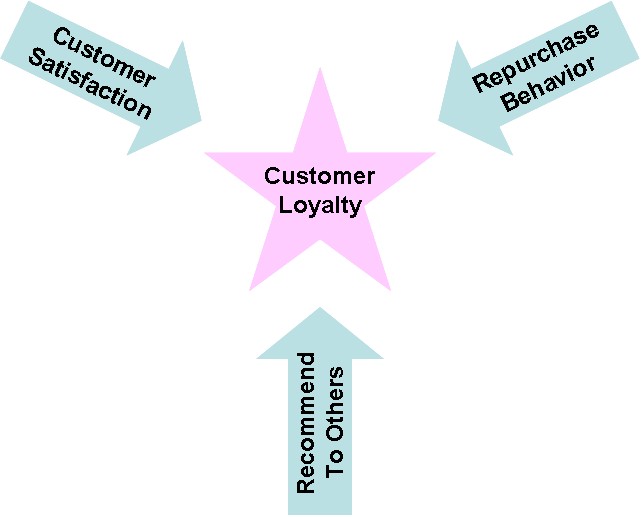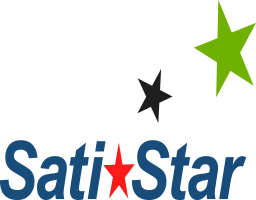Customer Loyalty Measurement
Overview
The customer loyalty business model used in strategic management is one in which company resources are employed so as to increase the loyalty of customers and other stakeholders in the expectation that corporate objectives will be met or surpassed. Loyalty measurement includes all of the elements of Customer Satisfaction and adds the dimensions associated with long-term loyalty (repurchase behavior & willingness to act as an advocate).
Scope And Deliverables
 Customer satisfaction is first based on a recent experience of the product or service. This assessment depends on prior expectations of overall quality compared to the actual performance received. If the recent experience exceeds prior expectations, customer satisfaction is likely to be high. Customer satisfaction can also be high even with mediocre performance quality if the customer’s expectations are low, or if the performance provides value (that is, it is priced low to reflect the mediocre quality). Likewise, a customer can be dissatisfied with the service encounter and still perceive the overall quality to be good. This occurs when a quality service is priced very high and the transaction provides little value.
Customer satisfaction is first based on a recent experience of the product or service. This assessment depends on prior expectations of overall quality compared to the actual performance received. If the recent experience exceeds prior expectations, customer satisfaction is likely to be high. Customer satisfaction can also be high even with mediocre performance quality if the customer’s expectations are low, or if the performance provides value (that is, it is priced low to reflect the mediocre quality). Likewise, a customer can be dissatisfied with the service encounter and still perceive the overall quality to be good. This occurs when a quality service is priced very high and the transaction provides little value.
Loyalty then looks at the strength of the business relationship and proposes that this strength is determined by the level of satisfaction with recent experience, overall perceptions of quality, customer commitment to the relationship, and bonds between the parties. Customers are said to have a “zone of tolerance” corresponding to a range of service quality between “barely adequate” and “exceptional.” A single disappointing experience may not significantly reduce the strength of the business relationship if the customer’s overall perception of quality remains high, if switching costs are high, if there are few satisfactory alternatives, if they are committed to the relationship, and if there are bonds keeping them in the relationship. The existence of these bonds acts as an exit barrier. There are several types of bonds, including: legal bonds (contracts), technological bonds (shared technology), economic bonds (dependence), knowledge bonds, social bonds (friendship), cultural or ethnic bonds, ideological bonds, psychological bonds, geographical bonds, time bonds, and planning bonds.
We then examine the link between relationship strength and customer loyalty. Customer loyalty is determined by three factors: relationship strength, perceived alternatives and critical episodes. The relationship can terminate if: 1) the customer moves away from the company’s service area, 2) the customer no longer has a need for the company’s products or services, 3) more suitable alternative providers become available, 4) the relationship strength has weakened, or 5) the company handles a critical episode poorly.
The final link in the model is the effect of customer loyalty on profitability. The fundamental assumption of all the loyalty models is that keeping existing customers is less expensive than acquiring new ones. It is often claimed that a 5% improvement in customer retention can cause an increase in profitability of between 25% and 85% (in terms of net present value) depending upon the industry.
The increased profitability associated with customer retention efforts occurs because:
- The cost of acquisition occurs only at the beginning of a relationship: the longer the relationship, the lower the amortized cost.
- Account maintenance costs decline as a percentage of total costs (or as a percentage of revenue).
- Long term customers tend to be less inclined to switch and also tend to be less price sensitive. This can result in stable unit sales volume and increases in dollar-sales volume.
- Long term customers may initiate free word of mouth promotions and referrals.
- Long term customers are more likely to purchase ancillary products and high-margin supplemental products.
- Long term customers tend to be satisfied with their relationship with the company and are less likely to switch to competitors, making market entry or competitors’ market share gains difficult.
- Regular customers tend to be less expensive to service because they are familiar with the processes involved, require less “education,” and are consistent in their order placement.
- Increased customer retention and loyalty makes the employees’ jobs easier and more satisfying. In turn, happy employees feed back into higher customer satisfaction in a virtuous circle.
For this final link to hold, the relationship must be profitable. Striving to maintain the loyalty of unprofitable customers is not a viable business model. That is why it is important to for marketers to assess the profitability of each of its clients (or types of clients), and terminate those relationships that are not profitable. In order to do this, each customer’s “relationship costs” are compared to their “relationship revenue.” A useful calculation for this is the patronage concentration ratio (the amount spent with one supplier divided by the total amount spent at all suppliers of that commodity). This calculation is often hindered by the difficulty in allocating costs to individual relationships and the ambiguity regarding relationship cost drivers.
What We Will Do
- Assist in developing a list of high priority, critical customers for each key market segment in which you compete.
- Create customer loyalty measurement (CLM) instrument.
- Obtain internal approval for the CLM.
- Test and refine CLM.
- Conduct CLM survey.
- Compile and analyze results.
- Provide feedback to leadership team.
- Refine CLM instrument for future surveys.
- Assist in the development of improvement action plans.
- Guide the implementation of the improvement action plans.
What We Need You To Do
- Provide us with access to key relevant employees, process owners and managers.
- Authorize these resources to provide us with the required information.
- Provide us with required access to your customer databases.
- Prepare an updated list of customer contact information.
- Provide appropriate working space for the team’s activities.
- Review and approve the CLM instrument in a timely manner.
- Consider and provide appropriate rewards to incent customers to respond to the CLM survey in a timely manner.
- Ensure leadership team’s availability to review CLM survey results.
- Ensure adequate participation in the development and implementation of the improvement action plans.
WHAT PEOPLE ARE SAYING
SatiStar's Experience Makes The Difference!
